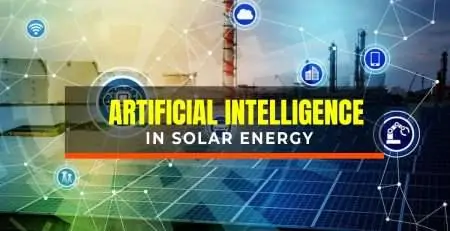Energy Crisis In Europe And How To Mitigate It
After Russia’s invasion of Ukraine and with the decrease in the supply of Russian pipeline gas supplies, Europe has been facing an energy crisis that has grasped the attention of many across the world. Though the nation could save itself from some of the adverse impacts of the energy crisis, yet, there are certain crucial challenges that lie in front of the nation. This includes a sharp rise in energy prices, energy security, and climate threats.
Energy Crisis In Europe – It Is Not Yet Over
There is a tough and uncertain economic outlook being faced by Europe. Following Russia’s invasion of Ukraine, the annual energy inflation rate reached a record level of 40%. Even though recent months showed a considerable reduction in energy inflation (16.6%), still, most businesses and households are facing struggles due to the energy cost.
Panic over energy supplies prevailed in the nation after Russia invaded Ukraine (2022). The major source of natural gas from Russia drastically reduced which led to increased prices, ten times more compared with the previous year. Since it will take considerable time to replace Russian gas supplies with the supplies of the nation, probably the energy prices are continued to remain higher.
Prior to the invasion of Ukraine, Europe had been utilizing 50% of its oil exports from Russia and more than 60% of its gas exports. However, after the war, the situation worsened as Russia weaponized its energy exports, ending up with raised costs of oil and gas.
The existing situation in Europe indicates the crisis remains, however, it lies within the opportunity to make a structural change. The actions taken by the nation in 2022 could make Europe navigate safely through the winter. Though the energy prices are down, they are not low.
Overall European gas demand fell by 13% (2022)
Estimated change drivers in natural gas demand in power, buildings, and industry in Europe, Comparison between 2022 and 2021 (%)
After the cut-off of gas and oil from Russia, Europe is very serious about energy conservation. The new emergency regulations and tweaked policies are looking to speed the green energy transition and fulfill the climate goals of the nation.
The favorable weather conditions of 2023 and prompt actions from the Government have moderated the situation. But the energy crisis is not entirely over and it requires some clear actions to cope with the situation of energy demand.
Mitigating The Energy Crisis In Europe – How Does Solar Energy Guide The Light?
Europe is still facing the impacts of the energy crisis and it suffers from a climate crisis as well. The dependence of the nation on imported fossil fuels can never meet the needs of Europe
Can solar energy help in solving the energy crisis of the nation?
The answer is ‘YES’. The EU is already at the forefront of scaling up renewable energy and is focusing on its efforts to fill the cracks in the energy demand situation with some long-lasting measures paving the way to a greener energy future.
On the way to overcoming the shockwaves created across Europe and protecting against volatile energy prices and energy security issues, there is a bright solution at the fingertips. Making the switch to solar!
Responding to the existing situation of energy demands and climate threats, there has been approved a new emergency regulation the European Commission which accelerates the renewable segment in Europe. This regulation is intended to emphasize making the transition to clean, green, reliable, and affordable energy and reducing the dependency on fossil fuels. The new Regulation is in existence in all 27 EU Member States and is applicable until the 30th of June 2024. The EU, including the US and China, are undertaking billions of dollars to fulfill the need of achieving net zero greenhouse gas (GHG) emissions reduction, with the goal to reach the goal by 2050.
What Can Be The Long-Term Solution For Europe?
Solar power generation can serve as the fastest way to reduce the reliance on Russian gas and conventional resources. Europe is already on track to accomplish considerably more solar power by 2030. Solar power is considered the giant winner in the energy transition journey.
The annual deployment growth of 17-26% in the largest EU Member State markets marks a record for the European solar market. Research indicates a record-breaking solar capacity level in 2022.

The EU solar market is expected to reach more than double in the upcoming four years and attain 484GW by 2026.
Solar is not only the long-term solution for the EU, but also it offers relief from soaring energy prices.
The Future Of European Energy
Since the EU heavily relies on fossil fuels, it faces a tentative energy structure. However, it has the power to educate civilians about creating a clean and green future. Though Europe could manage the winter season this year, it cannot find itself having the same favorable situation next winter. Speaking about the solution to resolve the ongoing energy and climate crisis, the better solution is concentrating on energy self-sufficiency through solar power generation.
Increased measures for solar energy production combined with technological solutions can make sure of the energy transition. The climate crisis, the need for an affordable energy solution, and energy security – all it implies it’s the best time for Europe to accelerate toward a global energy transition, and solar is the way for it.








